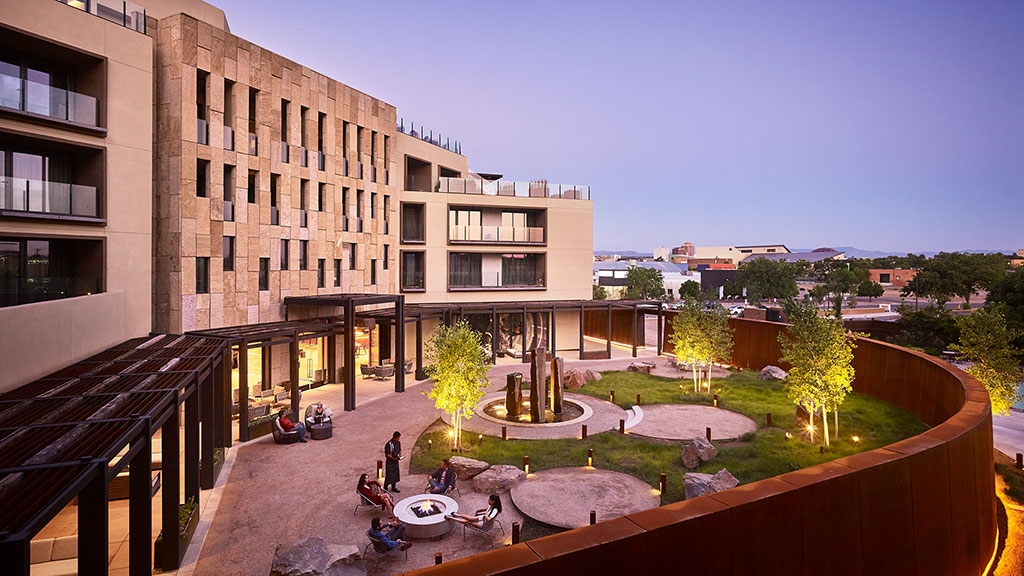The Future of Hospitality Is Local
May 15, 2023 | By Tori Thibodeaux
If we asked someone to define “hospitality,” their mind might conjure different adjectives or memories. There is no one true definition of the “hospitality” that humanity loves to indulge in. As designers, we know hospitality extends beyond vacations, experiences, and curations. It’s a complex interplay of functionality, art, and life, coming together to elevate a moment that is remembered for a lifetime.
However, we also have an obligation to preserve the unique cultures and embrace the voices of each community in order to avoid cultural erosion. Below are some strategies designers, clients, and localities can use to create a thoughtful, synergistic relationship and ultimately build an authentic guest experience that respects and preserves the community identity.
How Designers Can Connect Clients and Localities
The hospitality sector is keenly aware of shifts in what people demand out of their experiences. It’s up to designers to guide our clients and help them take full advantage of what locals add to an authentic experience while respecting the bounds in which all can enjoy. At the start of the design process, we should ask ourselves and our clients: Do we know the community? Are we engaging them? How do we delight our guests and those who live in the area? How do we empower both segments of people? Are we listening to what everyone wants and needs?
Designers can help facilitate a successful collaboration between client and locality by:
- Establishing town halls during which designers, clients, and locals can sit down and discuss questions and concerns. This will help establish partnerships from the inception of a project and will offer all parties a chance to identify goals, and assess how they will be achieved, while being respectful of already established cultural values.
- Allowing local businesses and community leaders to sit in on hotel programming. By inviting this stakeholder group to the table, we can collectively brainstorm ways to create additional revenue streams by engaging the local economy or suggesting new, curated guest experiences.
- Utilizing local talent to create authentic spaces that reflect the identity of the community and strengthen the project’s investment in the area.
How Clients Can Foster Community Connections and Economic Growth
As we develop this synergy, our clients have the most to gain from listening to the feedback of the local community. By offering guests the ability to interact with residents, the local microeconomy has the potential to grow because locals will see new hospitality developments as part of the city’s fabric.
An example of this is approach is the Hotel Chaco in Albuquerque, New Mexico, which was designed to be of cultural significance. Built on the footsteps of the Chaco Culture National Park, a 1,000-year-old UNESCO World Heritage site, it required the team to approach the design from beyond the confines of a computer and desk. The group camped at Chaco Canyon to fully immerse themselves in the park and ruins to gain a deeper understanding of the design language, materials, landscapes, and emotions evoked from interacting with sacred land significant to the Pueblo people. The hotel went beyond architectural design; it integrated native-inspired restaurants with local ingredients, native plantings, and artisan pieces, and together they entrench guests and visitors in a cultural experience. It’s now an award-winning hotel, with visitors and locals alike praising the hotel’s tailor-made, one-of-a-kind experience.
As designers, we can work with our clients to develop dedicated programming that honors the community and utilizes hotel facilities, which will in turn drive tourism year-round. Nature tours, craft fairs, live music, food trucks, and sporting events offer the opportunity for the hospitality industry to engage with its local population while highlighting and celebrating the community’s unique culture.
Designing With Cultural Sustainability in Mind
As designers, we can guide our clients to design with cultural sustainability. This consideration will allow for many cities to avoid resource exploitation and a general disregard for the local community. If designers, clients, and localities collaborate, we can ensure room for economic growth while creating a more honest and authentic hospitality experience for all. In building trust, we’ll go beyond tourism, and provide an authenticity that you simply can’t replicate.
For media inquiries, email .

